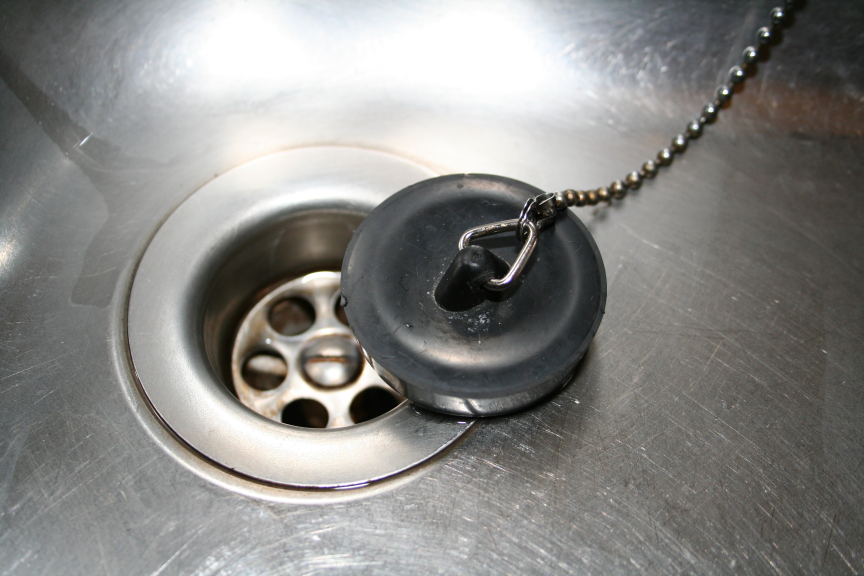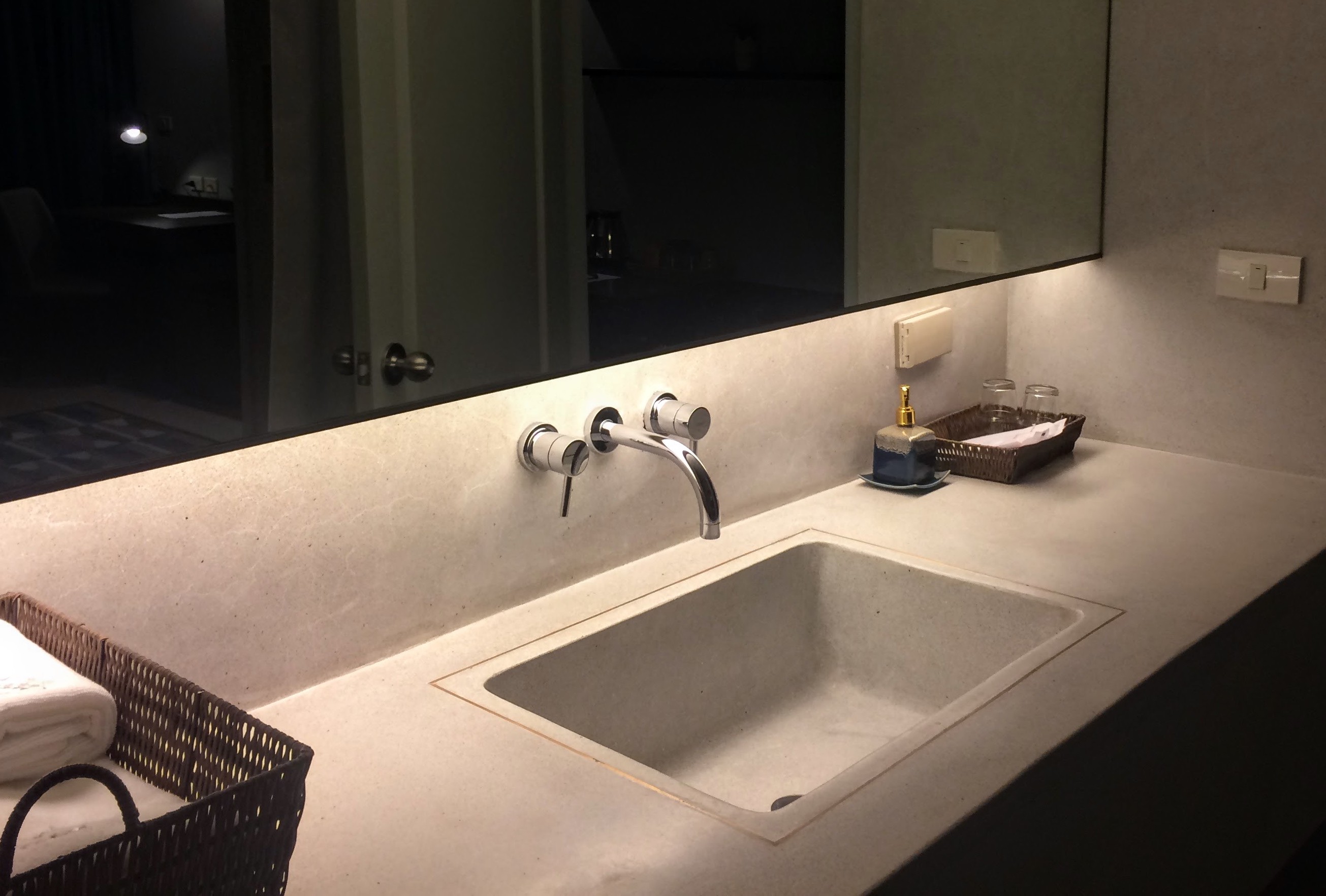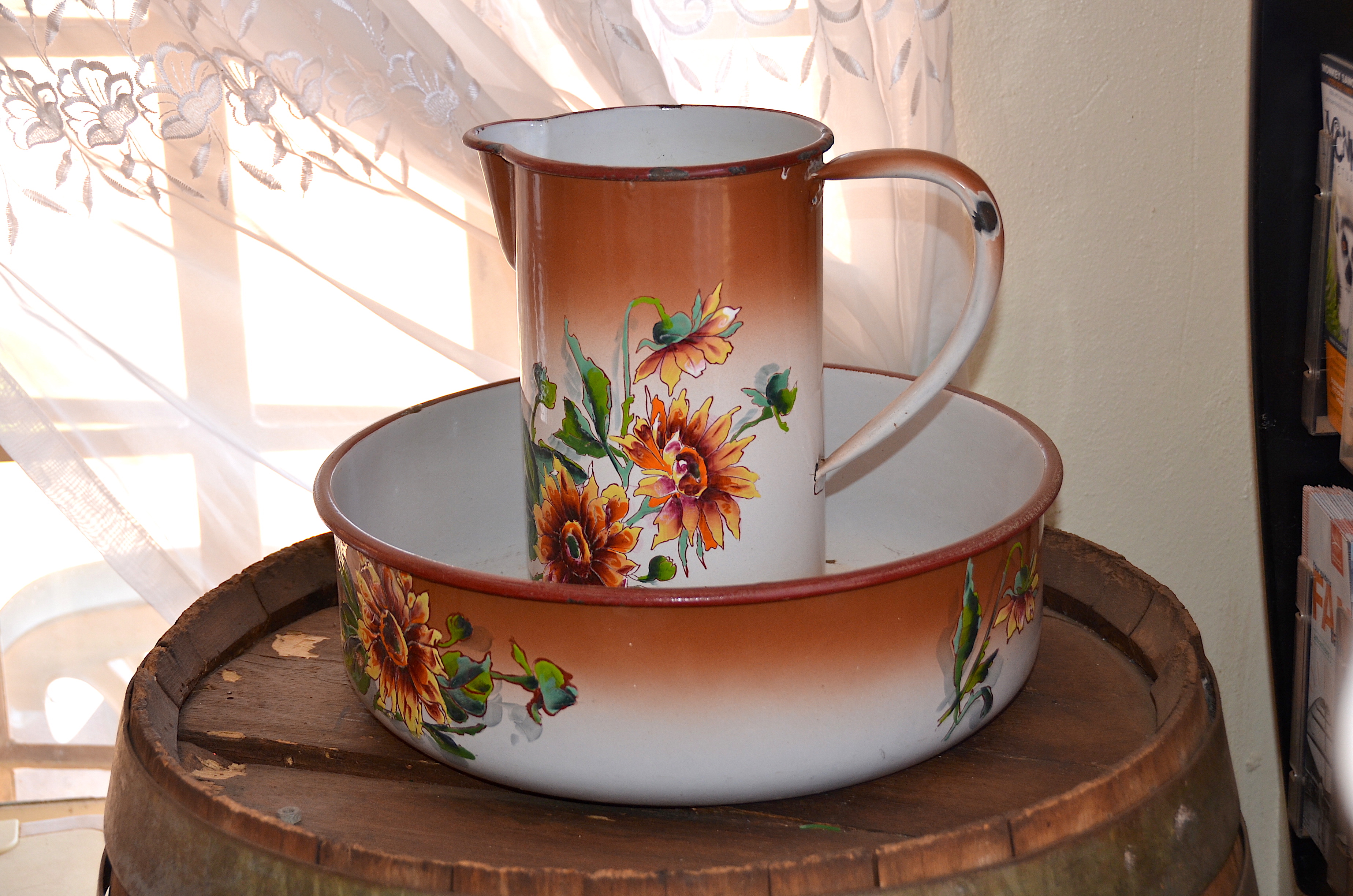|
Plug (sanitation)
A plug in sanitation is an object that is used to close a drainage outlet firmly. The insertion of a plug into a drainage outlet allows the container to be filled with water or other fluids. In contrast to screw on caps, plugs are pushed into the hole and are not put over the hole. Plugs are most commonly encountered in the bathroom or kitchen, for use in bathtubs, wash basins or sinks. Traditional plugs Typically plugs are made from a soft material, such as rubber, or have a soft outer rim, so that they can be fitted to holes slightly smaller than their diameter; this ensures a tight seal. They are often connected by a ball chain which ensures the plug may be pulled from the drain with relative ease. Pop-up plugs Some modern plugholes dispense with the need for a separate plug, having instead a built-in 'pop-up plug' operated by a handle on the sink, that can move up or down to open or close the plughole. See also * Pipe plug A fitting or adapter is used in pipe syst ... [...More Info...] [...Related Items...] OR: [Wikipedia] [Google] [Baidu] |
Sanitation
Sanitation refers to public health conditions related to clean drinking water and treatment and disposal of human excreta and sewage. Preventing human contact with feces is part of sanitation, as is hand washing with soap. Sanitation systems aim to protect human health by providing a clean environment that will stop the transmission of disease, especially through the fecal–oral route.SuSanA (2008)Towards more sustainable sanitation solutions Sustainable Sanitation Alliance (SuSanA) For example, diarrhea, a main cause of malnutrition and stunted growth in children, can be reduced through adequate sanitation. There are many other diseases which are easily transmitted in communities that have low levels of sanitation, such as ascariasis (a type of intestinal worm infection or helminthiasis), cholera, hepatitis, polio, schistosomiasis, and trachoma, to name just a few. A range of sanitation technologies and approaches exists. Some examples are community-led total sanitation ... [...More Info...] [...Related Items...] OR: [Wikipedia] [Google] [Baidu] |
Drain (plumbing)
A drain is the primary vessel or conduit for unwanted water or waste liquids to be flumed away, either to a more useful area, funnelled into a receptacle, or run into sewers or stormwater mains as waste discharge to be released or processed. Design, installation and maintenance Drain design and installation parameters are engineered to ensure drain functionality for its intended purpose, allowing for variances in volume, matter to be conveyed and maintenance requirements. Drain installation takes into account principles related to gravity, vacuum, grade, human exposure safety to biological agents and resistance to functional failure. Also incorporated in drain design are requirements for drain maintenance and repair of a blocked drain. Safety Waste versus re-circulated drains In most systems the drain is for discharge of waste fluids, such as the drain in a sink in which the water is drained when it is no longer needed. In the United Kingdom, plumbers refer to waste water ... [...More Info...] [...Related Items...] OR: [Wikipedia] [Google] [Baidu] |
Bathtub
A bathtub, also known simply as a bath or tub, is a container for holding water in which a person or animal may bathe. Most modern bathtubs are made of thermoformed acrylic, porcelain-enameled steel or cast iron, or fiberglass-reinforced polyester. A bathtub is usually placed in a bathroom, either as a stand-alone fixture or in conjunction with a shower. Modern bathtubs have overflow and waste drains and may have taps mounted on them. They are usually built-in, but may be free-standing or sometimes sunken. Until acrylic thermoforming technology permitted other shapes, virtually all bathtubs used to be roughly rectangular. Bathtubs are commonly white in color, although many other colors can be found. Two main styles are common: * Western style bathtubs in which the bather lies down. These baths are typically shallow and long. * Eastern style bathtubs in which the bather sits up. These are known as ''furo'' in Japan and are typically short and deep. History of bathtubs and ... [...More Info...] [...Related Items...] OR: [Wikipedia] [Google] [Baidu] |
Wash Basin
A sink is a bowl-shaped plumbing fixture for washing hands, dishwashing, and other purposes. Sinks have Tap (valve), a tap (faucet) that supply hot and cold water and may include a spray feature to be used for faster rinsing. They also include a drain to remove used water; this drain may itself include a sink strainer, strainer and/or shut-off device and an overflow-prevention device. Sinks may also have an integrated soap dispenser. Many sinks, especially in kitchens, are installed adjacent to or inside a countertop, counter. When a sink becomes clogged, a person will often resort to using a chemical drain cleaner or a plunger, though most professional plumbers will remove the clog with a ''drain auger'' (often called a "plumber's snake"). History United States The washstand was a bathroom sink made in the United States in the late 18th century.Sinks< ... [...More Info...] [...Related Items...] OR: [Wikipedia] [Google] [Baidu] |
Sink
A sink is a bowl-shaped plumbing fixture for washing hands, dishwashing, and other purposes. Sinks have a tap (faucet) that supply hot and cold water and may include a spray feature to be used for faster rinsing. They also include a drain to remove used water; this drain may itself include a strainer and/or shut-off device and an overflow-prevention device. Sinks may also have an integrated soap dispenser. Many sinks, especially in kitchens, are installed adjacent to or inside a counter. When a sink becomes clogged, a person will often resort to using a chemical drain cleaner or a plunger, though most professional plumbers will remove the clog with a ''drain auger'' (often called a "plumber's snake"). History United States The washstand was a bathroom sink made in the United States in the late 18th century.Sinks ''The Old-House Journal''; Augu ... [...More Info...] [...Related Items...] OR: [Wikipedia] [Google] [Baidu] |
Rubber
Rubber, also called India rubber, latex, Amazonian rubber, ''caucho'', or ''caoutchouc'', as initially produced, consists of polymers of the organic compound isoprene, with minor impurities of other organic compounds. Thailand, Malaysia, and Indonesia are three of the leading rubber producers. Types of polyisoprene that are used as natural rubbers are classified as elastomers. Currently, rubber is harvested mainly in the form of the latex from the rubber tree (''Hevea brasiliensis'') or others. The latex is a sticky, milky and white colloid drawn off by making incisions in the bark and collecting the fluid in vessels in a process called "tapping". The latex then is refined into the rubber that is ready for commercial processing. In major areas, latex is allowed to coagulate in the collection cup. The coagulated lumps are collected and processed into dry forms for sale. Natural rubber is used extensively in many applications and products, either alone or in combination wit ... [...More Info...] [...Related Items...] OR: [Wikipedia] [Google] [Baidu] |
Piping And Plumbing Fittings
A fitting or adapter is used in pipe systems to connect straight sections of pipe or tube, adapt to different sizes or shapes, and for other purposes such as regulating (or measuring) fluid flow. These fittings are used in plumbing to manipulate the conveyance of water, gas, or liquid waste in domestic or commercial environments, within a system of pipes or tubes. Fittings (especially uncommon types) require money, time, materials, and tools to install and are an important part of piping and plumbing systems. Valves are technically fittings, but are usually discussed separately. Standards Standard codes are followed when designing (or manufacturing) a piping system. Organizations which promulgate piping standards include: * ASME: American Society of Mechanical Engineers ** A112.19.1 Enameled cast-iron and steel plumbing fixtures standards ** A112.19.2 Ceramic plumbing fixtures standard * ASTM International: American Society for Testing and Materials * API: American Petroleu ... [...More Info...] [...Related Items...] OR: [Wikipedia] [Google] [Baidu] |
Sewerage
Sewerage (or sewage system) is the infrastructure that conveys sewage or surface runoff (stormwater, meltwater, rainwater) using sewers. It encompasses components such as receiving drainage, drains, manholes, pumping stations, storm overflows, and screening chambers of the combined sewer or sanitary sewer. Sewerage ends at the entry to a sewage treatment plant or at the point of discharge into the Natural environment, environment. It is the system of pipes, chambers, manholes, etc. that conveys the sewage or storm water. In many cities, sewage (or municipal wastewater) is carried together with stormwater, in a combined sewer system, to a sewage treatment plant. In some urban areas, sewage is carried separately in sanitary sewers and runoff from streets is carried in storm drains. Access to these systems, for maintenance purposes, is typically through a manhole. During high precipitation periods a sewer system may experience a combined sewer overflow event or a sanitary sewer over ... [...More Info...] [...Related Items...] OR: [Wikipedia] [Google] [Baidu] |
Bathrooms
A bathroom or washroom is a room, typically in a home or other residential building, that contains either a bathtub or a shower (or both). The inclusion of a wash basin is common. In some parts of the world e.g. India, a toilet is typically included in the bathroom; in others, the toilet is typically given a dedicated room separate from the one allocated for personal hygiene activities. In North American English the word 'bathroom' is sometimes used to refer to any room in a residence that contains a toilet, regardless of the inclusion of a bath or shower. Historically, bathing was often a collective activity, which took place in public baths. In some countries the shared social aspect of cleansing the body is still important, as for example with '' sento'' in Japan and the "Turkish bath" (also known by other names) throughout the Islamic world. Variations and terminology The term for the place used to clean the body varies around the English-speaking world, as does the ... [...More Info...] [...Related Items...] OR: [Wikipedia] [Google] [Baidu] |







